
Robert Gerald Mondavi was an American winemaker. His technical and marketing strategies brought worldwide recognition for the wines of the Napa Valley in California. From an early period, Mondavi promoted labeling wines varietally rather than generically, which became the standard for New World wines. The Robert Mondavi Institute (RMI) for Wine and Food Science at the University of California, Davis opened in October 2008 in his honor.

Stag's Leap Wine Cellars is a winery founded by Warren Winiarski in 1970 and based in the Stags Leap District of Napa Valley, California.

California wine has a long and continuing history, and in the late twentieth century became recognized as producing some of the world's finest wine. While wine is made in all fifty U.S. states, up to 90% of American wine is produced in the state. California would be the fourth largest producer of wine in the world if it were an independent nation.
Warren Winiarski is a Napa Valley winemaker and the founder and former proprietor of Stag's Leap Wine Cellars.

Miljenko "Mike" Grgich was a Croatian-American winemaker in California. He was the winemaker behind the 1973 Chateau Montelena Chardonnay that bested several white Burgundy wines in the wine tasting event that became known as the Judgement of Paris. In recognition of his contributions to the American wine industry, Grgich was inducted into the Culinary Institute of America's Vintner's Hall of Fame on March 7, 2008. The tribute came at the same time that Grgich was celebrating his 50th vintage of winemaking in the Napa Valley.

Heitz Cellar is a California wine producer located within Napa Valley east of the town of St. Helena. An early modern era Napa Valley presence and pioneering exponent of French oak, the estate enjoys a historical renown with the success of its Martha's Vineyard Cabernet Sauvignon, and has also been described as a "master of Grignolino".

Napa Valley is an American Viticultural Area (AVA) located in Napa County, California. It was established by the Bureau of Alcohol, Tobacco and Firearms (ATF) on January 27, 1981. Napa Valley is considered one of the premier wine regions in the world. Records of commercial wine production in the region date back to the nineteenth century, but premium wine production dates back only to the 1960s.

J. Lohr Vineyards & Wines is a winemaking company headquartered in San Jose, California, with over 4,000 acres of estate vineyards in the Paso Robles AVA in San Luis Obispo County, Arroyo Seco and Santa Lucia Highlands AVAs in Monterey County, and the St. Helena AVA in Napa Valley, California. The family-owned and operated company was founded by Jerry Lohr in 1974. The company operates wineries in San Jose, Paso Robles, and Greenfield, California. In 2013, Steve Lohr was appointed CEO of the company. J. Lohr Vineyards & Wines’ product portfolio includes eight tiers of wine: J. Lohr Signature, J. Lohr Cuvée Series, J. Lohr Vineyard Series, J. Lohr Gesture, J. Lohr Pure Paso Proprietary Red Wine, J. Lohr Monterey Roots, J. Lohr Estates and ARIEL Vineyards. The portfolio also includes specialty brands Cypress Vineyards and Painter Bridge. J. Lohr ranks among the top 25 wine producers in the United States, with annual US sales exceeding 1.8 million cases.
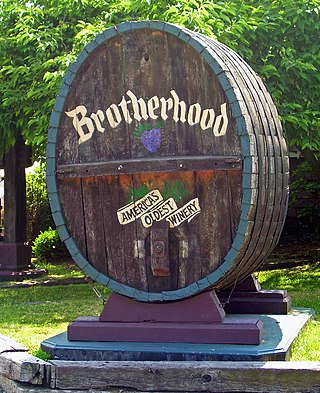
The history of American wine began when the first Europeans explored parts of North America, which they called Vinland because of the profusion of grape vines found there. However, European settlers, namely the Spanish, would later discover that the wine made from the various native grapes, had flavors which were unfamiliar and which they did not like. This led to repeated efforts to grow familiar Vitis vinifera varieties. The first vines of Vitis vinifera origin came up through New Spain (Mexico) and were planted in Senecu in 1629, which is near the present day town of San Antonio, New Mexico.

PlumpJack Winery is a boutique winery in Oakville, California specializing in premium Cabernet Sauvignon wines. PlumpJack was the first winery in Napa Valley to use screwcaps as a wine closure on fine wines. The winery is one of several businesses operated by the PlumpJack Group. The name of the company is inspired by "the roguish spirit of Shakespeare's Sir John Falstaff, dubbed Plump Jack by Queen Elizabeth."
Dawnine Sample Dyer is an American winemaker and entrepreneur who pioneered the use of champagne-making methods in California's fledgling sparkling wine industry in the 1970s.

California wine production has a rich viticulture history since 1680 when Spanish Jesuit missionaries planted Vitis vinifera vines native to the Mediterranean region in their established missions to produce wine for religious services. In the 1770s, Spanish missionaries continued the practice under the direction of the Father Junípero Serra who planted California's first vineyard at Mission San Juan Capistrano.
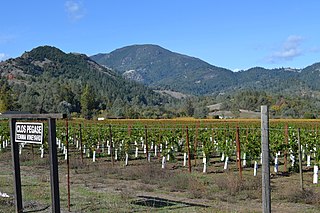
Napa County wine refers to the viticulture and winemaking in Napa County, California, United States. County names in the United States automatically qualify as legal appellations of origin for wine produced from grapes grown in that county and do not require registration with the United States Department of the Treasury Alcohol and Tobacco Tax and Trade Bureau (TTB). TTB was created in January 2003, when the Bureau of Alcohol, Tobacco and Firearms, or ATF, was extensively reorganized under the provisions of the Homeland Security Act of 2002.
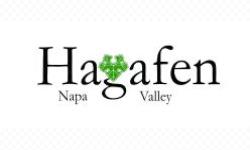
Hagafen Cellars is a winery located in the Napa Valley. Founded in 1979, it was the first kosher winery in California, and is "the first of the upscale kosher brands." The winery is owned and operated by winemaker Ernie Weir and his wife, Irit Weir.
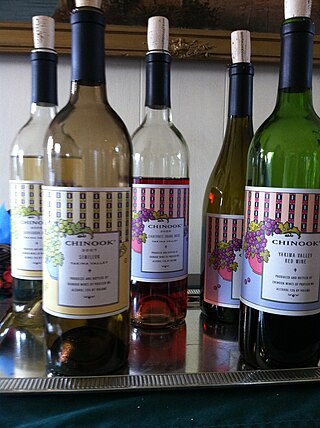
Chinook is a Washington winery located in the Yakima Valley AVA. Founded in 1983 by the wife and husband team of Kay Simon and Clay Mackey, Chinook was one of the pioneering wineries that established Prosser, Washington as a major wine-producing region in Washington state. Kay Simon, who began her career after graduating in 1976 from University of California-Davis in California's San Joaquin Valley and at Chateau Ste. Michelle, was one of the first female winemaker in Washington State. Chinook wines are widely regarded for their quality and help spread recognition for Washington wines. They are considered by wine experts such as Paul Gregutt to be "the classic expression of Yakima Valley fruit". Chinook's work with Cabernet franc, in particular, has garnered the statewide acclaim with the dry Cabernet franc rosé often described in wine reviews as a "Washington Chinon".

Silver Oak Cellars is a family-owned, California winery dedicated to producing only Cabernet Sauvignon. Silver Oak was established in 1972 by Ray Duncan and Justin Meyer. It is currently operated by Ray's sons David Duncan, who serves as the President and CEO, and his brother, Tim Duncan, who serves as Executive Vice President. Silver Oak has two wineries; one in Oakville in the Napa Valley and one in Healdsburg in the Alexander Valley. The Duncan Family also established Twomey Cellars in 1999, which has wineries in Calistoga and Healdsburg.

Daniel Baron is an American winemaker. He is best known for his work with the Duncan family-owned Silver Oak Cellars and Twomey Cellars, and was Director of Winemaking for both. After his retirement in 2017, he launched Complant Wine with his son, Sam Baron, to produce small production, artisanal, single vineyard wines. Originally a field worker for John Rolleri at Chateau Montelena, he gained experience in the Bordeaux region of France and was mentored by the likes of grape geneticist Professor Harold Olmo, and winemakers Jean-Claude Berrouet and Justin Meyer. He became general manager of Christian Moueix's Dominus Estate in the 1980s. He became winemaker for Silver Oak, an exclusive Cabernet Sauvignon producer, in 1994, and was trained by Justin Meyer to follow in his footsteps as Silver Oak's winemaker before Meyer’s retirement in 2001. In 1999, Baron was instrumental in persuading the Duncans to establish Twomey to pursue Merlot, Pinot noir, and Sauvignon blanc after discovering high quality Merlot grapes on Silver Oak’s Soda Canyon Ranch Vineyard. He has served on boards such as the American Society of Enology and Viticulture and the Napa Valley Wine Technical Group.

Justin Meyer was an American vintner, enologist, and member of the Christian Brothers. He was the founder along with Raymond Twomey Duncan of Silver Oak Cellars in 1972, a successful winery based in the Napa Valley and Alexander Valley. Today Duncan's sons David Duncan and Tim Duncan run Silver Oak Cellars, as well as Twomey Cellars, established in 1999. Meyer sold his share of the company to Duncan in 2001. One of California's top wine experts, he was president of the American Vineyard Foundation in the 1990s and also held numerous other positions in the wine industry. The San Francisco Chronicle cites Meyer as "one of the legends of the Napa Valley".
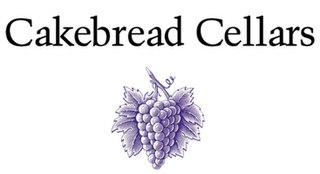
Cakebread Cellars is a Napa Valley winery known for its Chardonnay and Sauvignon Blanc wines, which are internationally distributed. Founded in 1973 by Jack and Dolores Cakebread in Rutherford, California, the winery produces approximately 200,000 cases of wine per year.

















